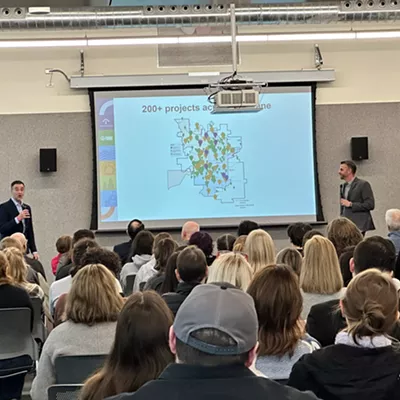Wednesday, January 31, 2018
Study: Washington's uninsured rate dropped to record lows under ACA but could go up again

Washington State Office of Financial Management
According to an OFM report released Jan. 31, "Estimates from 2010-13 show that prior to the start of ACA coverage provisions in 2014, Washington’s uninsured rate hovered at about 14 percent. For the next three years, the uninsured rate continually dropped to 8.2 percent in 2014, 5.8 percent in 2015 and 5.4 percent in 2016. The uninsured rate in each of the three years resulted in a new record low in Washington."
In the first three years of the Affordable Care Act, Washington's uninsured rate dropped at a faster pace than the rest of the country, according to a study released today by the Washington State Office of Financial Management.
In 2013, about 14 percent of Washingtonians were uninsured, a rate that had remained pretty steady since at least 2010. That was largely in line with the national rates, which sat a little closer to 14.5 percent.
But once the act took effect, with an individual mandate requiring insurance and penalizing those who don't have it, the rates quickly dropped, down to 8.2 percent in 2014, and then to 5.4 percent in 2016, which was expected to be about the same in 2017, according to the state's three-year study. Meanwhile, the national rate dropped to about 8.6 percent uninsured in the same time.
Part of the reason Washington's rate dropped faster than the national average is due to the fact that about half the states didn't expand Medicaid coverage as Washington did, the report states:
"What sets Washington’s trend apart from the national trend, though, is the pace of the decline in the uninsured rate. While Washington’s annual uninsured rate declined by 41 percent in 2014, the U.S. uninsured declined by about 19 percent. The slower U.S. pace in 2014 reflected the fact that only about half of the states implemented the ACA Medicaid expansion provision in the first year of the ACA. In 2016, however, the U.S. uninsured rate declined at a slightly faster pace than that of Washington, 9 percent and 7 percent, respectively. The faster decline in the U.S. uninsured rate in 2016 may be associated with the addition of five more states participating in the ACA after 2014."
By comparison, Idaho, which did not participate in the Medicaid expansion, had an uninsured rate closer to 17 percent before the ACA (also known as Obamacare), dropping to 16 percent in 2014, and down to 13.5 percent in 2016, according to U.S. Census data from the American Community Survey. OFM used the same source for its report on Washington and national numbers.
As the Inlander reported earlier this month, in states that didn't expand Medicaid, thousands of people who make
Because Washington's uninsured rates changed more rapidly than the country as a whole, the state could also be impacted more than other places if the ACA is changed or repealed, OFM's report states.
Among the things creating uncertainty about future
OFM's report notes:
"While efforts to repeal the ACA in its entirety may be put on hold for now, efforts to repeal several components of the ACA have succeeded.
...
These changes, particularly the change about the ACA individual mandate, are expected to cause health premiums and the uninsured rate to rise, according to the Congressional Budget Office analysis. The partial repeals and continued efforts at complete repeal of the ACA have generated uncertainty about the health coverage status in Washington and the nation in 2018 and beyond."
Tags: health care , health coverage , ACA , obamacare , insurance , insurance rates , uncertainty , News , Image



















